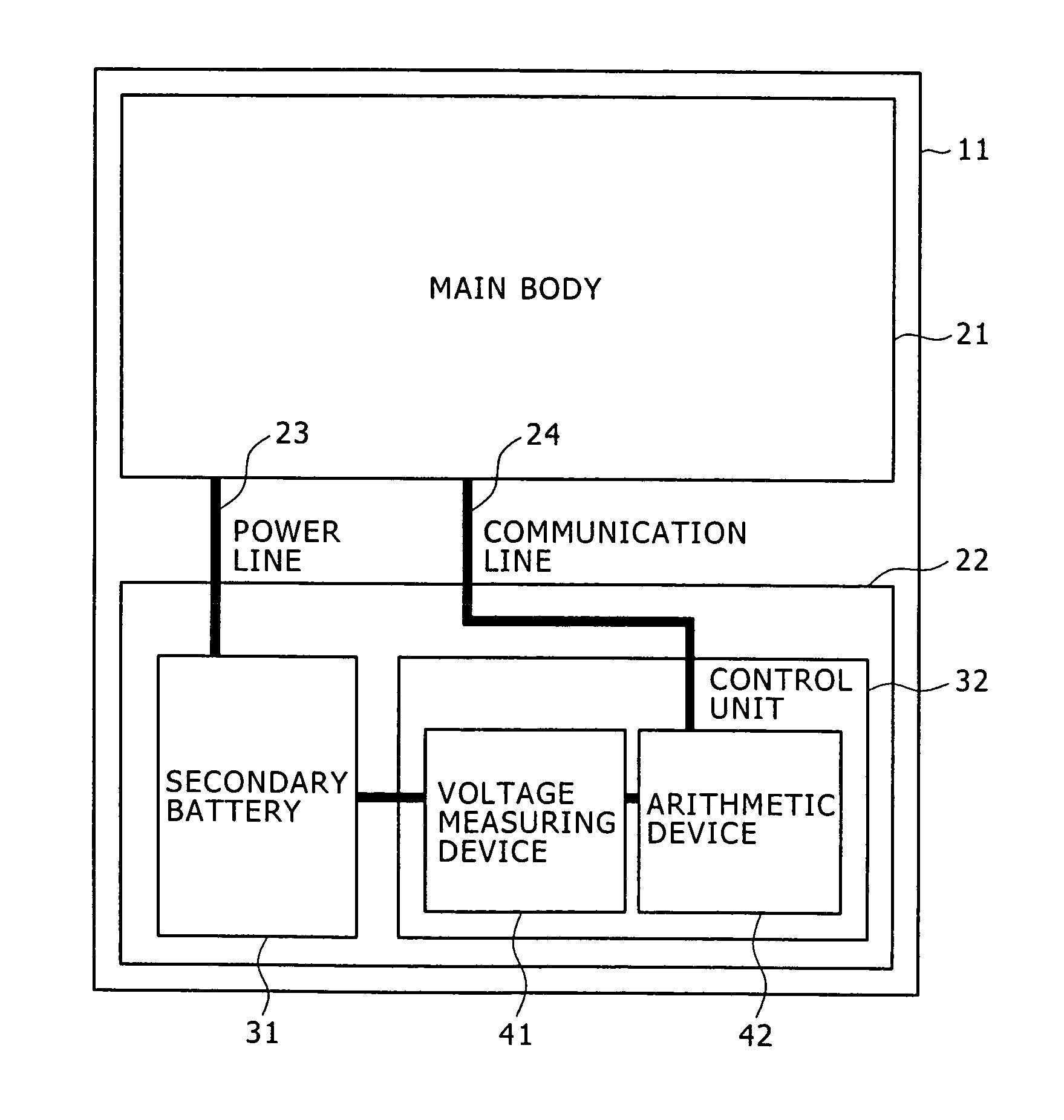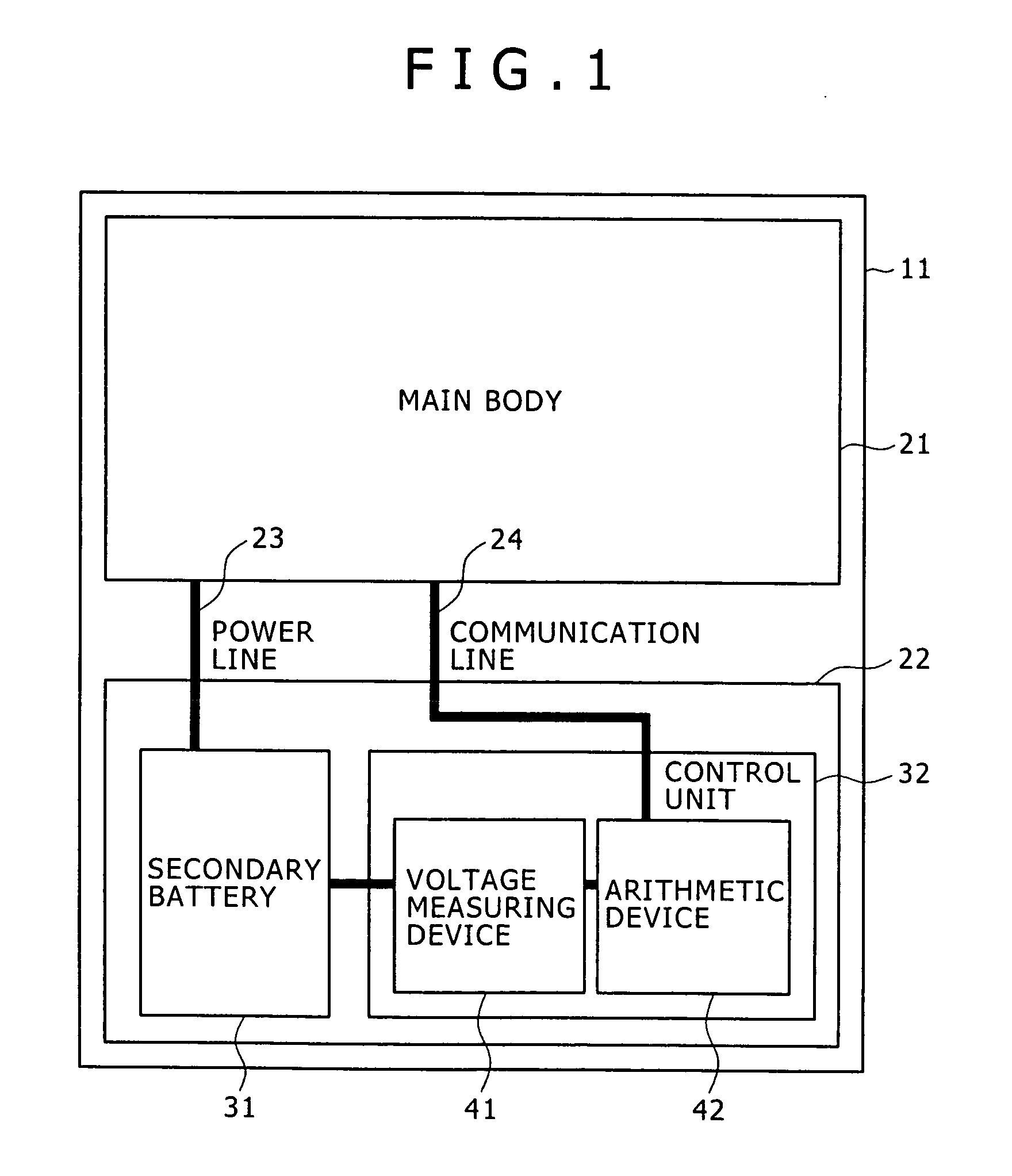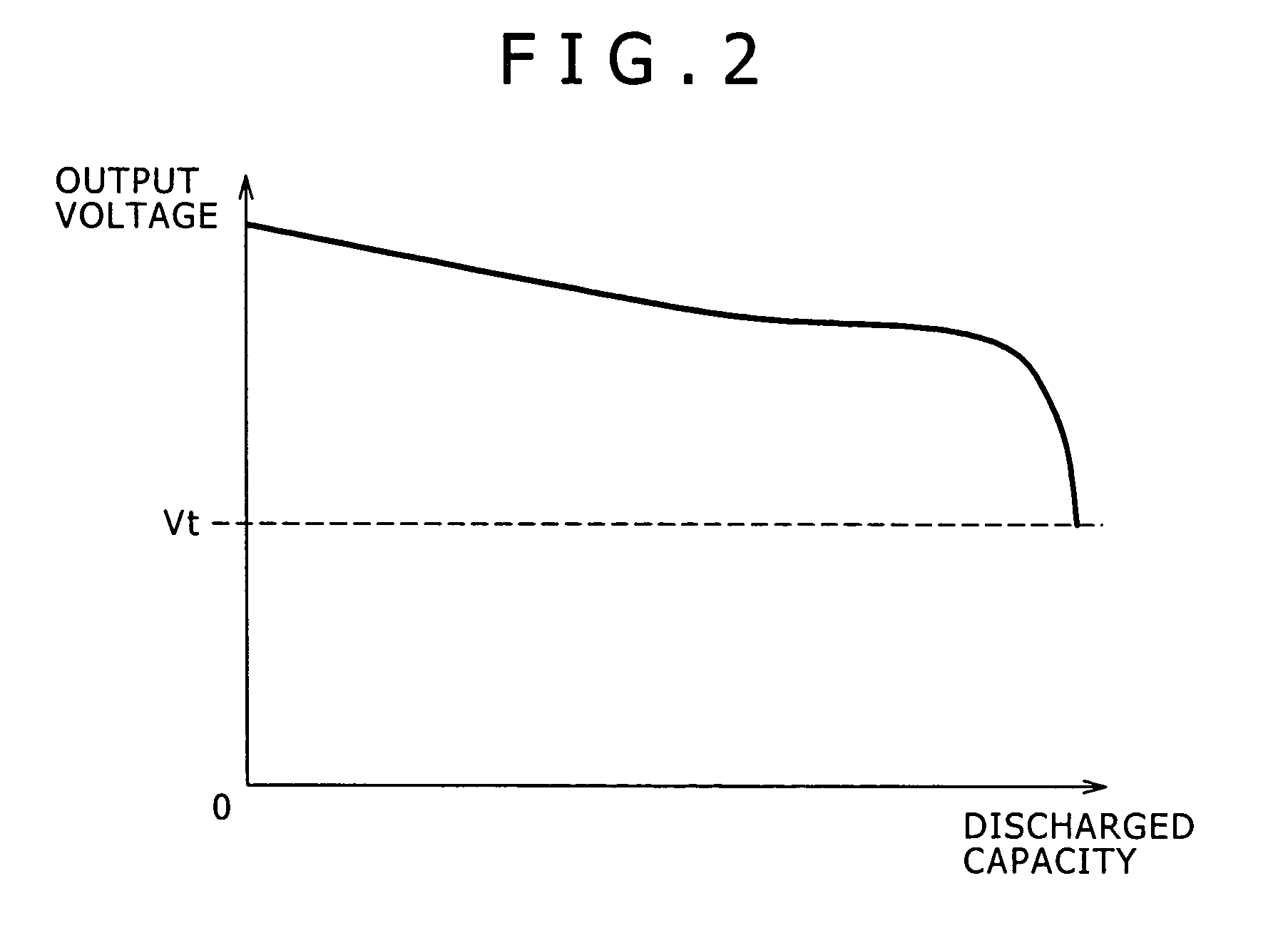Battery remaining capacity calculating method, battery remaining capacity calculating device, and battery remaining capacity calculating program
a battery remaining capacity and calculation method technology, applied in the field of battery remaining capacity calculating method, battery remaining capacity calculating device, battery remaining capacity calculating program, can solve the problems of increasing the remaining capacity displayed, the remaining capacity cannot be displayed correctly, and the need of the user, so as to improve the convenience of the user, the effect of battery remaining and high accuracy
- Summary
- Abstract
- Description
- Claims
- Application Information
AI Technical Summary
Benefits of technology
Problems solved by technology
Method used
Image
Examples
first embodiment
[0039] A portable telephone as an electronic device using a battery remaining capacity calculating method according to a present embodiment as a first embodiment of the present invention will be described with reference to FIGS. 1 to 5. It is to be noted that while description will be made of a portable telephone driven by a battery such as a secondary battery or the like, it is needless to say that the present embodiment is applicable to portable type electronic devices other than the portable telephone, that is, portable type electronic devices such for example as digital cameras, video cameras, and PDAs (Personal Digital Assistants).
[0040]FIG. 1 is a block diagram showing an example of configuration of a portable telephone that calculates a remaining capacity of a secondary battery using the battery remaining capacity calculating method according to the present embodiment. The portable telephone 11 is formed by a main body unit 21 and a battery unit 22. A connection between the ...
second embodiment
[0069] A method of calculating a battery remaining capacity using an identical reference voltage curve both in a low consumption mode and in a high consumption mode according to a second embodiment of the present embodiment will be described with reference to FIG. 6 and FIG. 7. A battery remaining capacity calculating method according to the present embodiment and the battery remaining capacity calculating method according to the first embodiment differ only in the method of calculating a battery remaining capacity in the high consumption mode. Therefore suppose that a configuration of a portable telephone, a reference voltage curve, and a reference table between remaining capacity levels and voltage values, for example, described with reference to FIGS. 1 to 3 are the same as in the first embodiment.
[0070] Description will next be made of the battery remaining capacity calculating method according to the present embodiment. The power consumption of a portable telephone 11 is chara...
first example
[0095] Data on an experiment using the battery remaining capacity calculating method illustrated in the first embodiment will be described as an example of the present invention. A portable telephone used in the experiment is a multi-function portable telephone including a 2-inch liquid crystal display and having a function of information communication. This portable telephone includes a lithium-ion secondary battery with a nominal voltage of 3.7 V, a capacity of 730 mAh, a full charge voltage of 4.2 V and a cutoff voltage of 3.55 V. The portable telephone is operated on an output from the lithium-ion secondary battery. In the present example, a remaining capacity is displayed on a scale of 10, which is more detailed than currently common three-level display. That is, the remaining capacity is displayed with 10 as a remaining capacity in a full charge state and zero as a remaining capacity in a state in which the portable telephone cannot be used. Incidentally, the remaining capacit...
PUM
 Login to View More
Login to View More Abstract
Description
Claims
Application Information
 Login to View More
Login to View More - R&D
- Intellectual Property
- Life Sciences
- Materials
- Tech Scout
- Unparalleled Data Quality
- Higher Quality Content
- 60% Fewer Hallucinations
Browse by: Latest US Patents, China's latest patents, Technical Efficacy Thesaurus, Application Domain, Technology Topic, Popular Technical Reports.
© 2025 PatSnap. All rights reserved.Legal|Privacy policy|Modern Slavery Act Transparency Statement|Sitemap|About US| Contact US: help@patsnap.com



